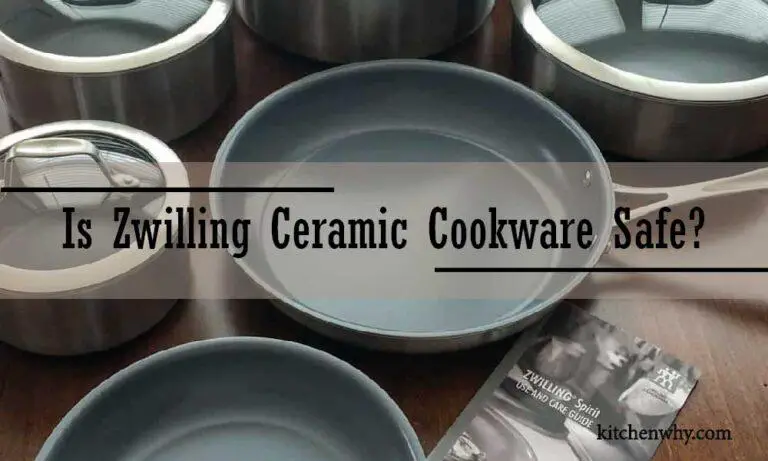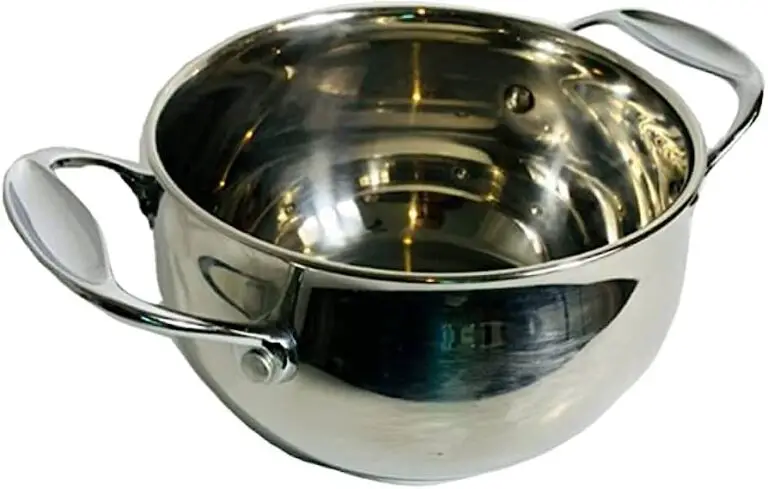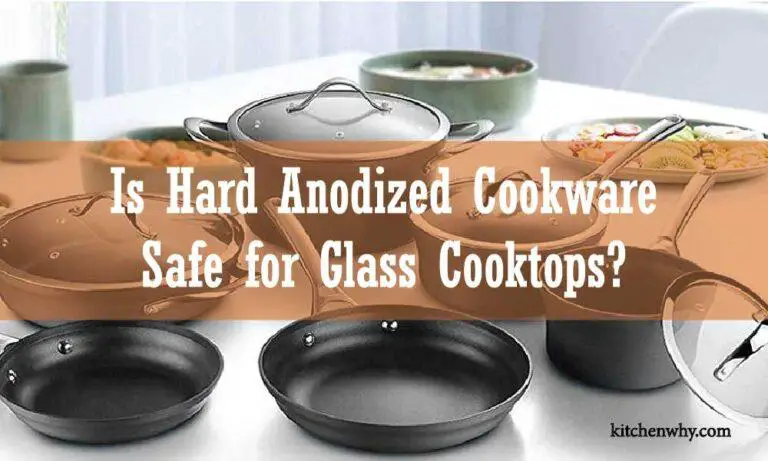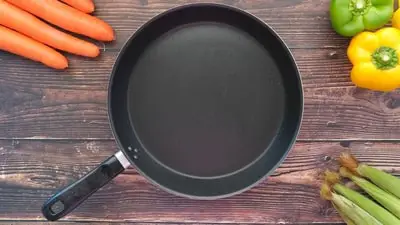Difference Between Frying Pan Vs Grill Pan: Which Is Best?

A frying pan and a grill pan can both be used to cook delicious dishes, but the two are quite different. If you want to create restaurant-quality meals at home, it’s important to understand the difference between Frying Pan Vs Grill Pan.
A frying pan and a grill pan are both cooking tools used for preparing various dishes. While they share some similarities, the two have some key differences. Frying Pans are used to make various dishes, from omelets to pancakes. Grill Pans are used to replicate the searing and charring of outdoor grilling.
Frying Pans are typically made of aluminum, stainless steel, cast iron, or copper. Grill Pans are typically made of cast iron or aluminum. Frying Pans typically have one long handle and a flat base. Grill Pans typically have two short handles and a ridged base.
However, continue reading to know more details about their differences.
What Are The Difference Between Frying Pan vs Grill Pan
Regarding cooking, two of the most common cooking utensils used in the kitchen are the frying pan and the grill pan. Both are excellent choices for many types of cooking, but they have different benefits and drawbacks. Understanding the difference between the two can help you decide which is better for your cooking type.
Let’s discuss the differences between a frying pan and a grill pan and what makes each unique.
1. Overview
Frying Pan
A frying pan is a shallow, flat-bottomed pan with short, sloped sides and a long handle. It is designed on the stovetop to quickly and evenly cook food. The sloped sides allow the heat to be distributed evenly, which helps to cook food quickly and evenly.
The long handle allows the user to easily move the pan, preventing food from burning or sticking to the bottom. Frying pans are typically made of non-stick materials like stainless steel, aluminum, or cast iron. They can cook various foods, including eggs, vegetables, fish, and meat.

Grill Pan
A grill pan is a flat-bottomed pan with ridges that are designed to mimic the effects of a traditional outdoor grill. The ridges allow fat and juices to drain away from the food, resulting in a healthier, less greasy meal.
Grill pans are typically made of cast iron or stainless steel and can cook various foods, including vegetables, fish, and meats. Unlike a frying pan, a grill pan should not be used on the stovetop, as the high heat can cause the ridges to warp or stick.
2. Construction Shape
A frying pan has a round or oval shape, while a grill pan has a U-shaped or V-shaped construction. The frying pan and grill pan shape can help determine how they cook food. A frying pan cooks food by spreading heat across the entire surface of the pan, while a grill pan cooks food by trapping hot air beneath the pan’s surface.
3. Handles And Bottom Surface
A frying pan is a pan with a flat bottom and long handle that is used for cooking. A grill pan has a flat bottom and short handle and is used for grilling foods. The frying pan has a flat bottom to prevent it from cooking non-uniformly. It also allows the heat to be evenly distributed between the pan and the food.
The grill pan has a flat bottom so that it can be used for grilling both vertically and horizontally. This type of pan provides greater surface area, allowing for faster food cooking.
4. Material
A frying pan is made of a harder, heavier material than a grill pan. This makes it better suited for frying food, as frying requires high heat and a hard surface. Additionally, a frying pan is less likely to warp or bend, making it more resistant to wear and tear. A grill pan, on the other hand, is made of a softer material and is better suited for grilling food. This is because grilling requires lower heat and allows for more even cooking.
5. Cooking Techniques
Frying pans are designed to be used on the stovetop, while grill pans are designed to be used in the oven or on the grill. Frying pans are best used for quickly and evenly cooking foods like vegetables, eggs, fish, and meats.
Grill pans are best used for searing, grilling, and even roasting foods like vegetables, fish, and meats.
Read More:
6. Cleaning
Frying pans are typically easier to clean than grill pans, as the non-stick surface makes removing any residue from the food easier. Grill pans require more effort to clean, as the ridges can trap food particles and require more scrubbing to remove.
7. Price
Frying pans are typically less expensive than grill pans, as they are made from less expensive materials. Grill pans are typically more expensive, made from higher-quality materials like cast iron or stainless steel.
8. Durability
Frying pans are typically less durable than grill pans, made from less durable materials. Grill pans are typically more durable and made from higher-quality materials like cast iron or stainless steel.
9. Health Benefits
Frying pans can quickly cook food with minimal oil, resulting in a healthier meal. Grill pans allow fat and juices to drain away from the food, resulting in a healthier, less greasy meal.
10. Difference Between Frying Pan vs Grill Pan Pros & Cons
Pros
- Frying pans are great for cooking food quickly.
- Grill pans are perfect for giving food a smoky, grilled flavor.
- Frying pans are ideal for sautéing vegetables.
- Grill pans are perfect for searing meats.
Cons
- Frying pans can be difficult to clean.
- Grill pans can be difficult to control the heat.
- Frying pans can cause food to stick to the surface.
- Grill pans can be difficult to find the right size.
Ultimately, frying and grill pans are excellent cooking utensils and can be used for many types of cooking. Ultimately, deciding which one is better for you should depend on the type of food you are cooking and your preferences.
Difference Between Frying Pan Vs Grill Pan: In-Depth Comparison Chart
| Frying Pan | Grill Pan |
|---|---|
| A frying pan is a shallow, flat pan used for cooking food over direct heat. It is usually made of metal, such as aluminum or stainless steel. | A grill pan is a shallow, ribbed pan used for cooking food over direct heat. It is usually made of cast iron. |
| Frying pans are used to cook food quickly and evenly. | Grill pans are used to create grill marks on food. |
| Frying pans are available in various sizes and shapes. | Grill pans typically have a square or round shape. |
| Frying pans are typically used for sautéing, searing, and pan-frying. | Grill pans are typically used for grilling meats, fish, and vegetables. |
| Frying pans are usually non-stick and easy to clean. | Grill pans require seasoning with oil to make them non-stick and easy to clean. |
Is a Grill Pan Better Than a Frying Pan?

Whether a grill pan is better than a frying pan really depends on the type of food you’re cooking and your personal preferences.
A grill pan is designed to create grill marks and sear food, giving it a charred and slightly smoky flavour. It typically has ridges or raised lines that allow fat to drain away from the food, which can result in a healthier end product. This type of pan is especially great for cooking meats, such as steak, chicken, and fish, as well as vegetables, like asparagus, zucchini, and eggplant.
On the other hand, a frying pan, also known as a skillet, has a flat bottom and shallow, sloping sides. It’s ideal for cooking foods that require even heat distribution, such as pancakes, eggs, and sauteed vegetables. Frying pans can also be used for searing meats, but the food won’t get the same grill marks because they don’t have ridges.
In summary, a grill pan is a great choice if you want to achieve grill marks and sear your food. A frying pan may be more suitable if you want even heat distribution and the ability to cook a wider variety of foods. Ultimately, the best pan for you depends on your cooking needs and preferences.
Frequently Asked Questions
Here are some commonly asked questions about the difference between frying pans and grill pans.
Which one is better for cooking food?
The answer to this question depends on the food you cook. For example, a frying pan is great for sautéing vegetables or making an omelette, while a grill pan is better for grilling steak or fish. It also depends on the type of texture you want for your food. A frying pan will give you a soft, tender texture, while a grill pan will give you a more crispy and smoky flavour.
If you want a versatile cookware option, a grill pan is great. It can be used to sear, grill, and even bake food. Grill pans work well on most stovetops and are easy to clean.
Can you use a grill pan on an electric stove?
Yes, you can use a grill pan on an electric stove. However, ensuring the grill pan you choose is designed for an electric stove is important. Grill pans designed for gas stovetops may not be suitable for electric stoves, as the heat distribution may not be even.
It is also important to ensure the grill pan you choose is compatible with your electric stove. Some electric stoves may not be able to handle the heat of a grill pan, so it is important to check the manufacturer’s instructions before using a grill pan on an electric stove.
Is it necessary to season a grill pan?
Yes, it is important to season a grill pan before use. This will help to reduce sticking and create a non-stick surface for cooking. Seasoning a grill pan also helps to prevent rust and corrosion, which can damage the pan and make it unsafe to use.
Rub a thin layer of vegetable oil onto the pan’s surface to season a grill pan. Next, heat the pan over medium-high heat on the stovetop until the oil smokes. Let the pan cool completely, then wipe off any excess oil. Your grill pan is now ready to use.
Grill Pans: 5 Fast Facts
Final Words
Grill pans and frying pans are both useful and versatile cookware pieces. Grill pans are great for searing, grilling, and charring food, while frying pans are perfect for pan-frying, sautéing, and other cooking techniques.
Depending on your dish and the cooking technique you want to use, either of these pans can do the trick. By understanding the difference between these two pans, you can choose the best option for your cooking needs.





![Top 6 Best Pans For Ceramic Cooktops [Review 2023]](https://kitchenwhy.com/wp-content/uploads/2023/06/best-pans-for-ceramic-cooktops-768x476.jpg)
